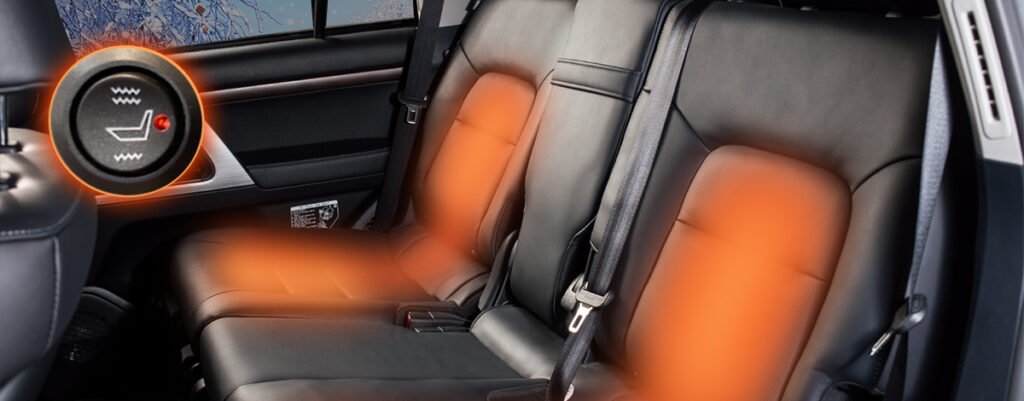When it comes to heating up a cold vehicle in winter, it seems like it can never happen quickly enough. If you frequently drive in colder temps, you know what we’re talking about. Obviously, getting a reliable and efficient car seat heater can be your smartest choice.
Heated and ventilated seats have become more common in new cars over the last few years.
1. The history of car seat heater
Far back in the 19th century, modern cars were being mass produced, but they were mostly open, no windows and certainly no heat.
Until 1907, enclosed cars that featured glass windshield were first produced, that helped protect against the elements such as sun, snowing and rain, but passengers still felled frozen in car. At the first beginning, so objects called “heater boxes” were popular.
During the 1920s, a number of manufacturers designed special exhaust manifolds that allowed some of that exhaust heat to be funneled into the passenger compartment. In the 1930s Engineers started working with the coolant and radiator system. With several studies and research initiated by automobile engineers and companies such as Cadillac,Saab,Ford and GM. Finally GM introduced car seat heaters in 1939. Seat heaters are featured in many vehicles now.
2. In-seat Vs external model
Usually, there are two types of car seat heater models: in-seat and external.
The external model sits on top of the seat and can be removed freely, while in-seat model is built into the seat itself, and it can be turned on and off with the push of a button, but it cannot be removed easily.
The in-seat model is powered by the car’s battery in most cases, and the controls for the heat are built into the dash or center console.
The external model is essentially a seat cover with heating elements inside, often controlled by hand controller and powered by a connection to a 12 volt outlet in the car.
Each of the above types has its advantages and disadvantages. The following is a comparison of the two models.
| advantages | disadvantages | |
| In-seat model | 1. More aesthetic. The in-seat model does not affect the appearance of the car seats. It is built into the seat itself. 2. More functional. A couple of control buttons have many features. Such as button illumination, protection against short circuit or overheating, the regulation of the heating force and so on. 3. Arbitrary temperature adjustment. The fine of temperature control creates an optimally comfortable temperature for the driver and passengers. 4. Stronger heating force. The in-seat model is connected directly to the vehicle’s electrical network, Obviously, the power is noticeably higher than that of similar external models that are connected via a cigarette lighter. | 1. The price of in-seat model is somewhat higher than external model. In-seat model has higher process requirements, the price of In-seat models is somewhat higher than external models. 2. Installation of in-seat model requires more time and manipulation Offenly you have to contact the service engineer for installation, which increases the cost of the purchasing. 3.Relatively difficult to repair If the In-seat model breaks down, mostly you will have to contact the specialists and pay for their services. |
| external model | 1. Easier to install and dismantle the installation will just take a few minutes and only requires ordinary knowledge in the automotive industry. 2. Protecting seats from contamination The external model is installed on the car seat, which obviously can protect the seat. 3. Richer designs and styles They have a lot of color options and are made of various materials. | 1. Big limitations in the power supply Connect to the cigarette lighter, which means their power will be correspondingly small and limited by its capabilities and fuses. 2. Poor functionality Heating power adjustment usually has only a few options, which make it difficult to get a optimal temperature. 3. Easy to slide Fastened with special belts, rubber bands or hooks, and the cover is simply put on a regular car seat. Long-term body friction makes the external seat heater easier to shift too much. |
3. How does a car seat heater work?
When the budget is made and theA heating coil is placed below the seat cushion and electricity passes through it. As the electricity flows through the coil, it is resisted which causes the friction that then produces heat.
When the seat heaters are turned on, the electricity flows into the coil from a circuit, and it is a very small amount – only enough to start the formation of a magnetic field. That field then flips a switch called a relay, and the seat heaters begin to receive energy directly from the car’s battery.
So, how does the seat know when to shut the heat off? A thermostat regulates the temperature. If the coils just continued to stay hot and receive power, they would eventually cause a fire and damage not only your car but you in the process!
The thermostat shuts off power to the coils by switching off the relay once the temperature hits a certain mark. Once the temperature gets too low, the relay will switch back on and the power from the battery will begin to reheat the seats. main purpose and function requirements of the headset are determined, the scope should be greatly reduced and several models locked.

